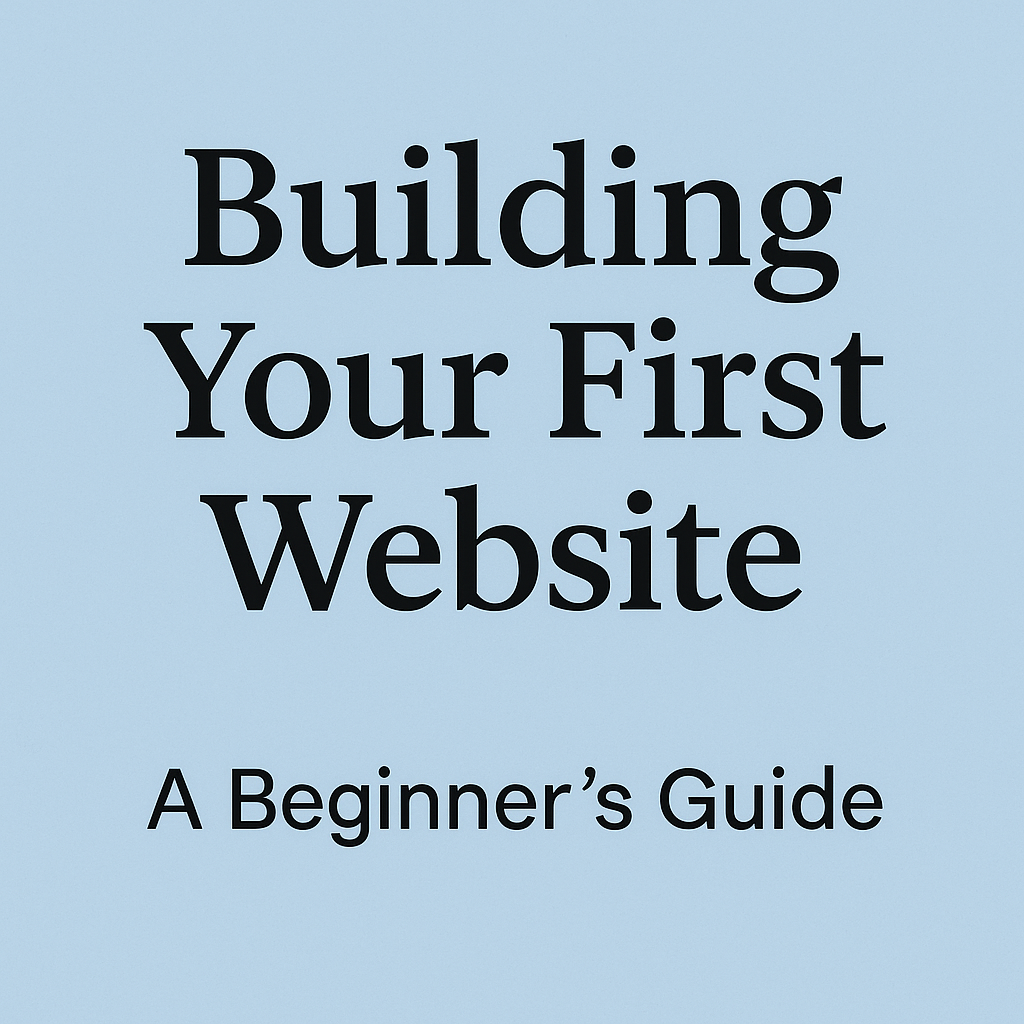So, you’ve decided to build your first website? Congratulations! Whether you’re creating a personal blog, an online portfolio, or a small business site, getting started is easier than you might think. You don’t need to be a tech wizard, and you don’t need to spend a fortune. You just need the right tools, a bit of curiosity, and a willingness to learn.
Here’s a simple, no-nonsense guide to help you build your first website step by step.
1. Define Your Purpose
Before jumping into design or platforms, ask yourself a few basic questions:
- What is the goal of your website?
- Who is your audience?
- What kind of content will you share?
Having clarity on these points will guide every decision you make later, from choosing a platform to designing the layout.
2. Choose a Domain Name
Your domain name is your website’s address on the internet. It should be:
- Simple and easy to remember
- Relevant to your content or brand
- Ideally, ending with a .com, but .net or .org can also work
Use registrars like GoDaddy, Namecheap, or Google Domains to search and buy your domain.
3. Pick a Website Builder or Platform
There are many platforms out there, but for beginners, a few stand out:
- Wix: Drag-and-drop interface, good for creatives.
- WordPress.com: Flexible and widely used.
- Squarespace: Great for design-focused users.
- Shopify: Ideal if you’re building an online store.
If you’re a bit more adventurous and want more control, you can go with WordPress.org and host it yourself (more on that next).
4. Get Web Hosting (if needed)
If you go with a self-hosted platform like WordPress.org, you’ll need web hosting. This is where your website “lives.”
Reliable beginner-friendly hosting providers include:
- Bluehost
- SiteGround
- Hostinger
They offer one-click WordPress installs, which makes setup a breeze.
5. Choose a Theme or Template
Themes control the look and feel of your site. Most platforms offer free and paid themes. Look for:
- Responsive design (mobile-friendly)
- Clean layout
- Customization options
Don’t overthink it—start with a simple theme and tweak it as you go.
6. Add Your Content
Start with the basics:
- Homepage: Introduce yourself or your business
- About Page: Share your story
- Contact Page: Add a form or email address
- Blog/Services/Portfolio: Depending on your purpose
Make sure your content is clear, typo-free, and easy to read. High-quality images and readable fonts go a long way.
7. Make It User-Friendly
Think about the people visiting your site:
- Keep navigation simple
- Use headings and short paragraphs
- Add buttons or links where needed
Your site should load quickly and look good on all devices—test it on your phone, tablet, and computer.
8. Publish and Promote
Once you’re happy with how it looks, hit publish! Share your website on social media, add it to your email signature, and let friends and family know.
If you’re serious about getting traffic, learn a bit about SEO (Search Engine Optimization). Use keywords naturally, write helpful content, and keep your site updated.
9. Keep Improving
Your first website won’t be perfect—and that’s okay. Websites are never “finished.” You’ll learn new things, spot mistakes, and come up with fresh ideas.
Make regular updates. Add new content. Keep experimenting.
Final Thoughts
Building your first website is a milestone worth celebrating. It’s your corner of the internet, your voice, your digital home. Don’t get overwhelmed by technical terms or endless options. Start simple, focus on your message, and grow from there.
Remember: every great website started somewhere. Yours is just getting started.



